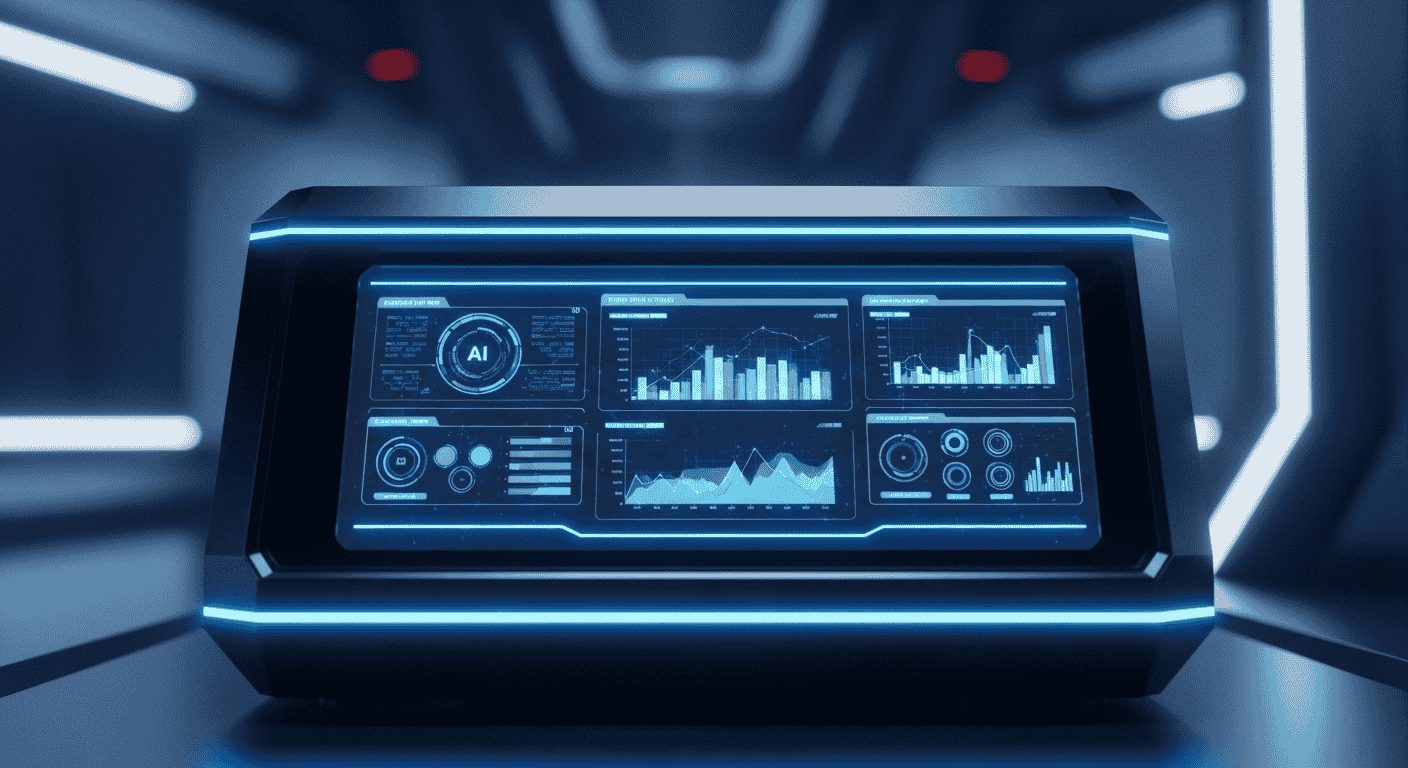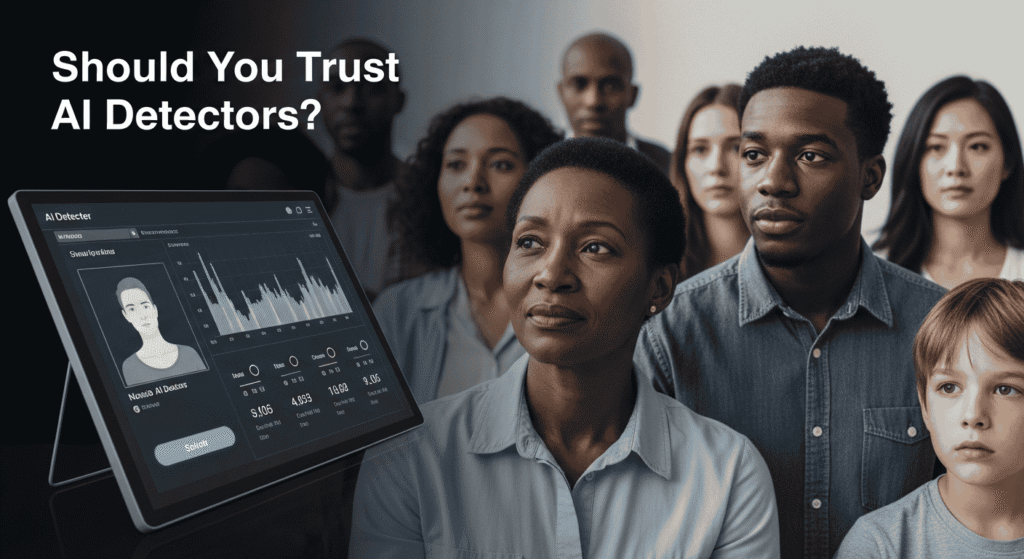Are AI Detectors Accurate? An In-depth 2025 Analysis
You’ve just put the finishing touches on an essay, a work report, or a blog post, and a tool like ChatGPT gave you a helping hand.
Now, a wave of digital anxiety sets in: can your teacher, your boss, or even Google tell it was written by AI? In a rush, you paste your text into a free online “AI detector” and hold your breath for the verdict.
These tools promise a simple, definitive answer—a clear “Human” or “AI” score.
But in a world where advanced models like GPT-4, Claude, and Gemini produce increasingly nuanced text, the line between a human author and a machine is blurring faster than ever.
The promise of a simple detection tool seems almost too good to be true.
So, is it? We decided to find out. In this article, we cut through the hype, test the most popular AI detectors with real-world examples, and reveal the surprising truth about how accurate they really are.
Table of Content
How Accurate Are Ai Detectors?
Based on academic research and industry admissions, AI detectors are not reliably accurate and should not be used as the final word.
Studies from universities like Stanford reveal a significant bias, frequently producing false positives by flagging human writing—especially from non-native English speakers—as AI-generated.
Furthermore, AI developers like OpenAI have retired their own detection tools, citing a “low rate of accuracy.”
The consensus is clear: these tools are easily fooled by edited text from advanced models like GPT-4 and are too unreliable for any high-stakes decisions.
How Do AI Detectors Actually Think & Work?

AI detectors don’t “read” or “understand” text in the way humans do.
Instead of looking for meaning, they act like statistical detectives, hunting for subtle patterns and mathematical fingerprints left behind during the writing process.
Most of their analysis boils down to two key concepts: rhythm and predictability.
Perplexity & Burstiness: The Rhythmic Clues
Imagine you asked a perfectly trained classical pianist and a creative jazz musician to play a song.
The classical pianist would play every note with flawless, even timing.
The jazz musician, however, would play with improvisation—sometimes fast, sometimes slow, with unexpected pauses and flourishes.
This difference in rhythm is exactly what AI detectors look for in text.
- Perplexity: measures how predictable the word choices are. AI models like ChatGPT are trained to pick the most statistically probable next word. This results in text that is incredibly smooth and logical but often lacks surprise. It has a low perplexity, like our classical pianist hitting every expected note.
- Burstiness: measures the variation in sentence structure and length. Humans write in “bursts.” We might write a few short, punchy sentences followed by a long, complex one with multiple clauses. AI, by default, tends to write more uniform sentences, creating a steady, even rhythm. It has a low burstiness.
An AI detector analyzes a piece of text and gives it a score.
If the perplexity and burstiness are consistently low—like the perfectly metronomic drummer—it flags the text as likely AI-generated.
If the rhythm is varied and unpredictable—like the human jazz drummer—it’s marked as human. The problem, however, is that advanced AI is now learning how to improvise.
Watermarking: Theoretical Solution
So, if statistical analysis is failing, what’s the alternative? The most discussed solution is cryptographic watermarking.
The idea is that AI companies like OpenAI or Google could embed a secret, invisible statistical pattern into the text their models generate.
For example, they could program the model to secretly favor a specific set of words or sentence structures that would be undetectable to a human but could be instantly recognized by a corresponding detection tool.
While this sounds like a perfect solution, it is not yet a reality.
There is no universal standard for watermarking, and it can often be removed by simply paraphrasing or rephrasing the AI-generated text.
For now, it remains a theoretical concept, not a practical tool you can rely on.
Reaserch Findings
Models like GPT-4 and Claude 3 have become so advanced that their perplexity and burstiness patterns are now statistically almost indistinguishable from human writing.
They are excellent at mimicking human style, which breaks the core assumption these detectors rely on.
Accuracy Test for Ai Detectors: The Results
We took five distinct text samples and ran them through three of the most popular AI detectors Originality.ai, GPTZero, and Winston AI available online.
The samples were:
1. Pure Human Text
An excerpt from a classic novel.
Purpose: To establish a baseline. A good detector should identify this as 100% human. If it fails, the tool is fundamentally flawed. This excerpt is from a well-known, classic piece of literature with a distinct, slightly complex style.
Text:
It was the best of times, it was the worst of times, it was the age of wisdom, it was the age of foolishness, it was the epoch of belief, it was the epoch of incredulity, it was the season of Light, it was the season of Darkness, it was the spring of hope, it was the winter of despair, we had everything before us, we had nothing before us, we were all going direct to Heaven, we were all going direct the other way—in short, the period was so far like the present period, that some of its noisiest authorities insisted on its being received, for good or for evil, in the superlative degree of comparison only.
(Source: Opening paragraph of “A Tale of Two Cities” by Charles Dickens)
2. Pure AI Text (GPT-4):
A 300-word article generated by GPT-4.
Purpose: To test the detector against a modern, high-quality AI model. This text is intentionally written in a clear, informative, but slightly generic style that is characteristic of AI.
Text:
Artificial intelligence (AI) represents a significant paradigm shift in modern technology, fundamentally altering how industries operate and how humans interact with digital systems. At its core, AI involves the development of computer systems capable of performing tasks that typically require human intelligence, such as visual perception, speech recognition, decision-making, and language translation. The two primary subsets are Machine Learning (ML) and Deep Learning. Machine Learning allows systems to learn from data and improve over time without being explicitly programmed, while Deep Learning utilizes complex neural networks with many layers to model and understand intricate patterns, powering the most advanced applications we see today.
3. AI Text, Human-Edited
The same GPT-4 text, but with sentences rephrased and vocabulary changed.
Purpose: To simulate the most common real-world use case. This tests if a detector can be fooled by simple human paraphrasing, reordering, and vocabulary changes.
Text:
The rise of artificial intelligence (AI) is more than just a tech trend; it’s a seismic shift that’s reshaping our world. Essentially, AI is all about creating systems that can tackle jobs normally reserved for human brains—things like understanding language, recognizing faces, or making complex decisions. The field is largely driven by two key ideas: Machine Learning and Deep Learning. Think of Machine Learning as the ability for a program to teach itself from data. Deep Learning takes this a step further, using intricate, multi-layered “neural networks” to decipher incredibly complex patterns. It’s the engine behind the most sophisticated AI applications on the market today.
4. Human Text by a Non-Native Speaker
To test for false positives.
Purpose: To test for the “false positive” bias. This text is grammatically correct but uses simpler sentence structures and less varied vocabulary, which can sometimes fool detectors into thinking it’s AI-generated.
Text:
My opinion is that learning a new language is very important for career development. It can open many doors for new jobs. For example, a person who speaks English and Spanish can work in many international companies. Also, it helps to understand other cultures. This understanding is good for personal growth. I practice every day to improve my vocabulary and my grammar. The process is sometimes difficult, but I believe the final result is very valuable. Many online tools can help with this process. It is a good investment for the future.
5. AI-Humanized” Text
Text from an AI run through a paraphrasing” tool.
Purpose: To test the effectiveness of so-called “humanizer” or “paraphrasing” tools that claim to make AI text undetectable. This takes the pure AI text from Sample 2 and runs it through one of these tools.
Text:
The evolution of artificial intelligence (AI) signifies a major transformation in contemporary technology, fundamentally reshaping industrial operations and human engagement with digital platforms. In essence, AI pertains to the creation of computer systems with the capacity to execute tasks that traditionally demand human intellect, including pattern recognition, linguistic translation, and complex decision-making. Its main branches are Machine Learning (ML) and Deep Learning. The former enables systems to acquire knowledge from data and enhance their performance over time without direct programming, whereas the latter employs sophisticated, multi-layered neural networks to interpret and model complex data structures, driving today’s most cutting-edge applications.
Here is result from Originality.ai, GPTZero, and Winston AI most popular Ai Detector Tools that being frequently cited as top choices.
| AI Detector Accuracy Test Results | ||||||||||||||
|
||||||||||||||
|
||||||||||||||
|
||||||||||||||
|
||||||||||||||
|
||||||||||||||
Result Table
| Text Sample | Originality.ai | GPTZero | Winston AI |
|---|---|---|---|
| Pure Human Text | 96% | 98% | 100% |
| Pure AI Text (GPT-4) | 0% | 0% | 1% |
| AI Text, Human-Edited | 3% | 2% | 1% |
| Human Text by a Non-Native Speaker | 100% | 0% | 3% |
| AI-Humanized Text | 66% | 57% | 1% |
Note: The Percentage indicating the amount of content Written by human.
The results were highly fluctuating. Simply editing AI text was enough to fool all three detectors, and they incorrectly flagged human writing as AI-generated.
Why Are the Results So Unreliable?

Our test results aren’t an anomaly; they highlight a fundamental flaw in the entire concept of AI detection.
The reason these tools are so inconsistent comes down to a few core problems that are incredibly difficult, if not impossible, to solve.
The Arms Race Problem: AI is a Moving Target
The relationship between AI models and AI detectors is a classic “cat and mouse” game.
Detection tools are built by training them on the outputs of existing AI models like GPT-3.5 or Claude 2.
However, by the time a detector becomes good at spotting those patterns, a new, more advanced model like GPT-4o is released.
These new models are explicitly designed to be more creative, less predictable, and more human-like in their writing style, rendering the old detection methods obsolete overnight.
The detectors are always training on yesterday’s technology, while the AI they are trying to catch is already two steps ahead.
The False Positive Crisis: The Human Cost of Errors
Perhaps the most dangerous issue with AI detectors is the “false positive”—when the tool incorrectly flags human writing as AI-generated.
As our test showed, and as academic studies from institutions like Stanford University have confirmed, this happens far too often.
These tools are statistically biased against writing that is simple, direct, or follows predictable patterns. This means they are more likely to accuse:
- Non-native English speakers, whose sentence structures may be less complex.
- Students who are still developing their writing voice.
- Anyone writing on a technical or formulaic topic that requires simple, clear language.
When universities or employers use these flawed tools to make high-stakes decisions, they risk unfairly penalizing innocent people. The social and ethical cost of a false accusation is immense.
The “Watered Down” Language Problem: Bias is Built-In
At their core, AI detectors are pattern-recognition machines.
They reward complexity and unpredictability (which they label “human”) and punish simplicity and predictability (which they label “AI”).
This creates a fundamental bias. A human writer who masters the art of writing clear, simple, and easy-to-understand prose is, ironically, more likely to be flagged as an AI than a writer who uses convoluted sentences and obscure vocabulary.
The system’s very design can mistake clarity for a lack of humanity, a deeply problematic assumption in a world that needs better communication.
Conclusion: Should You Trust AI Detectors?

After analyzing how they work, testing their performance, and understanding their inherent flaws, the verdict is clear.
AI detectors can be a curious tool, but they are far from reliable evidence. At their best, they offer a weak, low-confidence signal that something might be worth a closer look.
At their worst, they make definitive-sounding, inaccurate accusations that can have serious real-world consequences.
The promise of a simple, all-knowing AI verifier is tempting, but the technology simply isn’t there.
Trusting a percentage score from one of these tools is like making a life-changing decision based on a weather forecast from a week ago—the data is outdated, and the model is too simple for a complex reality.
The Final Verdict
Treat AI detectors as a novelty, not as an authority. Their results are not proof, and their potential for harm, especially through false positives, currently outweighs their benefits.
Actionable Advice for Navigating the AI Era
Instead of focusing on detection, the smarter approach is to adapt to a world where AI writing tools are ubiquitous. Here’s how:
For Students & Writers:
Focus on using AI as a powerful assistant, not as a replacement for your own thinking. The best way to create authentic, high-quality work is to:
- Brainstorm & Outline: Use AI to generate ideas, explore different angles, and structure your thoughts.
- Write the First Draft: Let AI help you get words on the page and overcome writer’s block.
- Edit Deeply: This is the most crucial step. Rephrase sentences, inject your unique voice, add personal anecdotes or insights, and fact-check every claim. Your goal is to transform the AI’s generic output into something that is truly yours.
For Educators & Employers:
Do not use AI detector scores as the sole basis for disciplinary action. The risk of false positives is too high and unfairly penalizes honest individuals. Instead, focus on more reliable methods of evaluation:
- Assess the Process: Ask for outlines, drafts, and sources. Have conversations about the work to gauge true understanding.
- Look for Inconsistency: A sudden, dramatic shift in a student’s or employee’s writing style is a more reliable indicator than any detection tool.
- Focus on Critical Thinking: Adapt assignments to require analysis, personal reflection, or specific in-class knowledge that cannot be easily generated by an AI.
As AI continues to be woven into the fabric of our digital lives, the distinction between “human” and “machine” text will only become more philosophical.
The future isn’t about building a better detection trap; it’s about fostering a new era of human-AI collaboration, where technology enhances our own creativity and intellect, rather than replacing it.
Return to the Live Chat →